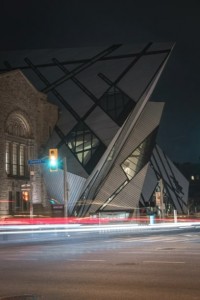Cities are almost like organisms in how they adapt and evolve over time. Unlike an organism though, parasites can actually be quite useful here. Parasitic architecture can make a bold statement and help to solve a range of problems. We want to have a closer look at it below. Then, if you want to work with an architect in London with impressive credentials, you can speak to us.
What is it?
 In nature, a parasite is something that relies on a host to live. There are plenty of examples, including fleas, tapeworms, species of fungi, and even mistletoe. In most cases the parasites cause harm to the hosts.
In nature, a parasite is something that relies on a host to live. There are plenty of examples, including fleas, tapeworms, species of fungi, and even mistletoe. In most cases the parasites cause harm to the hosts.
Parasitic architecture has a similar concept in that it relies on a host. In this case though, it is some kind of existing structure. You build a new addition and attach it directly to it. As a result, it relies on the current property to ensure it is stable. It can also get amenities from the main property, including power and water.
While you may not know the term, everybody will be familiar with some of the most popular examples of parasitic architecture. Have you ever seen a property with a conservatory or orangery? Almost any kind of extension is technically parasitic.
How can it help?
If you keep extensions in mind, you can see right away why parasitic architecture is so good; it can create more space without needing to demolish the original property. This is a way more sustainable way to build. You can maximise the results if you work with a top architect in London.
Designing new additions can breathe new life into older properties. Most importantly, you can be bold with the design of the new addition. There are lots of famous examples, including the Royal Ontario Museum (pictured above) and the appropriately named Parasitic Tower, both in Toronto.
One of the biggest advantages with parasitic architecture is you can often achieve more space without requiring additional land. Things like roof extensions or building hanging on walls can be really useful solutions. This could help provide things like more housing, workspaces, and amenities.
Hurdles
As every architect in London and other parts of the world will know, there are always challenges with projects. It can be even more difficult with parasitic architecture.
The biggest hurdle when you build on another structure is the existing property must be able to support the addition. Even the best designs will put some level of extra stress, strain, or load on the structure. In some situations it may be necessary to reinforce the current property.
Another major hurdle in many cases is building codes, regulations, and protections. It can be very difficult to get planning permission if there are any safety concerns. You can also struggle if the existing property has any kind of protection to preserve the history, character, and heritage.
Additionally, cost can become a concern with parasitic architecture. In many cases you need to use sophisticated materials and unique fittings, especially for bold designs. It can also be costly to actually install new additions, especially high up walls and on roofs.
Discuss your ideas with an architect in London
Whether you’re planning a new build, an extension, or something really bold, we’d love to help. Coffey Architects is an award winning company with a passion for innovation and sustainability. We can develop your ideas to create the perfect plan for a home, commercial architecture, and more.
So, call or email us today and let us know what you are looking to achieve. We’re a fantastic choice if you need an architect in London because of our wealth of experience working in the city. Crucially, we can help with obtaining planning permission.
